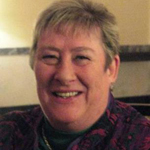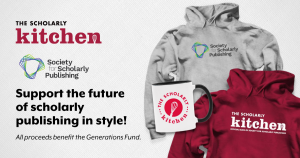Vice-President for Marketing Research and Development, Ringgold Inc.
 First, tell us a bit about yourself (hometown, current locale, family, hobbies, community involvement?).
First, tell us a bit about yourself (hometown, current locale, family, hobbies, community involvement?).
I was born and brought up on the windswept east Essex coast of England and then moved to study geology at Hull University and a post-graduate in Library and Information science at Leeds Metropolitan. My husband Chris Leamy and I recently moved our European home from Oxford to Kirkcudbright in south-west Scotland, a small artists’ colony with a very vibrant social life (not to mention art galleries, good restaurants and two spas) set in glorious scenery. We continue to spend most of our time, especially in winter, in our central Florida home near Crystal River on the gulf coast. These places reflect our hobbies of golf and kayaking as both the houses are close to both water and excellent golf courses. In Florida I have been a long standing volunteer at the Homosassa Spring Wildlife State Park where we have some of the best manatee viewing opportunities in the world. Despite my ambitions to work with the animals, my main contributions have been to the computer systems, public relations and fund raising.. When our new Kirkcudbright friends heard this, their eyes lit up and I’m already being approached to help with the Arts Festival, the Jazz Festival, the Food Festival…..
Describe some of your responsibilities, and how you or your organization fit into the scholarly communications web.
I have to say that I am a “jack of all trades” having worked in academia, libraries, publishing, subscription agents, software development and consultancy. Most of my recent career has been in small companies where you end up doing a bit of everything. At present my official title is VP, Marketing Research and Development at Ringgold Inc. So, as you can see, still a bit of everything. I am mainly responsible for the sales and marketing of Ringgold’s database of institutional information for academic publishers. I started the development of this database in 2002 as part of my then consulting company, Information Power, and it has now grown to over 200,000 records which are used by nearly 50 academic publishers and subscription agents worldwide for sales, marketing and customer relations. I still also spend a lot of time assessing the needs of publishers and vendors and trying to make sure that our products and services meet those needs. In this capacity I am the Product Manager and I am making sure that our metadata matches what will be required in existing and emerging standards.
What career path led to your current position?
It is difficult to say, except that my early career as a geologist made me want to classify everything and put it into a pigeon hole. At one point I was working on the Dewey classification for the British Library and I have always been keen on having everything organized and available for analysis. I’m also crazy about maps (of any sort) and general problem solving.
Where do you see scholarly communications heading, and what new directions interest you most?
The two main influences I see in scholarly communications at the moment are social networking and the demise of the “big deal”. I remember meeting Richard Price, the founder of academia.edu, in Oxford several years ago and he came from a totally different perspective outside publishing, although even then he believed that these networks were the future of publishing. The founders of Mendeley have the same non-publishing background and seem to be ignoring many of the traditional obstacles that affect conventional publishing.
The current economic situation has made initiatives like patron-driven acquisitions move along much faster than was originally expected and this is going to be an interesting challenge for publishers business models (and systems). Business models are something that has always interested me and this was much of the consultancy I was doing in the mid-90s.
I am still very interested in the non-content software side of publishing and libraries how long it takes for such systems to evolve. This is inevitable when you look at their complexity, but one of the areas I am particularly interested in is standardization, which is what allows interoperability in the supply chain. I spend a lot of time involved with EDItEUR and NISO and believe that my varied background can help give different perspectives on the problems and suggest solutions.
Anyone who knows me will know of my interest in institutional identifiers, I have seen this as a key part of the future of publishing since the mid 90s when I was working with Dawson’s Information Quest electronic journal platform. Many years later, I now believe we are getting close to a workable standard.
What are some of the surprises/obstacles that you’ve encountered during your career?
One of the most pleasant surprises was the collegiate nature of academic publishing. Having come from the cut-throat software industry, the working environment of publishing was indeed a surprise. Part of this may well be the mobility in the industry, you never know who your colleagues or competitors will be tomorrow and they are entirely interchangeable. I can’t think of any major obstacles I have had in my career, except getting through US immigration before I had a visa!
What advice would you give to people interested in a career in scholarly communications? What new roles or opportunities do you see emerging in the field?
I believe that the major opportunities in publishing for people coming into scholarly communications lie in technology, and although the editorial area may not have changed as much, the delivery, dissemination and readership angles certainly have. Publishing is now a race to make sure that your content gets read amongst the vast amounts of data out there, and that means making it discoverable. “Data” is the key word for anyone looking for a career in publishing – you need to understand data, how it works and how you find it.
Profiled March 2011

